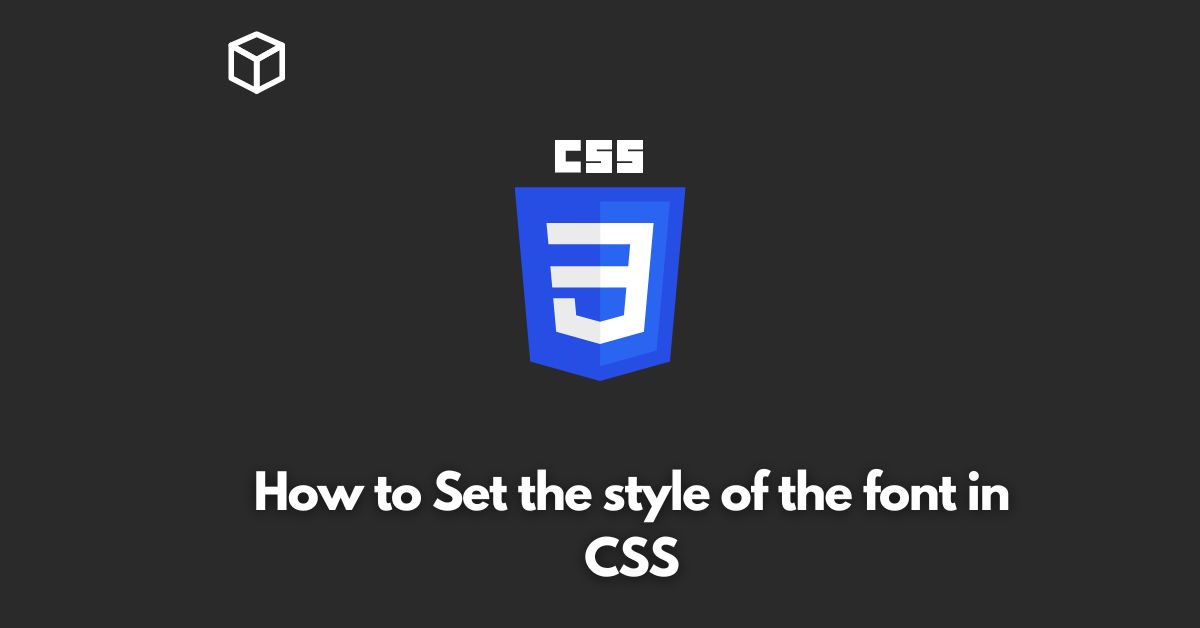When it comes to web design, one of the most important elements to consider is typography.
The font style of a website can greatly impact its overall aesthetic and readability.
In this CSS tutorial, we’ll take a look at how to set the font style in CSS, including various techniques for customizing the appearance of text on a webpage.
Setting the Font Style with CSS
To set the font style in CSS, you can use the “font-family” property.
This property allows you to specify a specific font or a group of fonts to be used on a webpage.
For example, to set the font of a webpage to Arial, you would use the following code:
body {
font-family: Arial;
}It’s important to note that not all devices and browsers have the same fonts installed, so it’s a good idea to specify a list of fonts to fall back on.
This is done by providing a comma-separated list of fonts, with the first font being the primary choice and the others being fallbacks.
For example:
body {
font-family: Arial, sans-serif;
}In this case, if the device or browser does not have Arial installed, it will default to a generic sans-serif font.
Customizing the Appearance of Text
In addition to setting the font style, you can also customize the appearance of text on a webpage using CSS.
Some of the properties you can use include:
- “font-size”: sets the size of the text
- “font-weight”: sets the boldness of the text
- “font-style”: sets the italicization of the text
- “text-transform”: sets the capitalization of the text
For example, to make the text on a webpage bold and 18px in size, you would use the following code:
body {
font-family: Arial, sans-serif;
font-weight: bold;
font-size: 18px;
}Using Google Fonts
Another way to customize the font style on a webpage is by using Google Fonts.
Google Fonts is a library of free, open-source fonts that can be easily integrated into a website.
To use a Google Font, you’ll need to add a link to the font’s CSS file in the head of your HTML document, and then specify the font in your CSS code.
For example, to use the “Open Sans” font from Google Fonts, you would first add the following link to the head of your HTML document:
<link href="https://fonts.googleapis.com/css2?family=Open+Sans&display=swap" rel="stylesheet">
Then, in your CSS code, you would specify the “Open Sans” font as follows:
body {
font-family: 'Open Sans', sans-serif;
}Conclusion
As you can see, there are many ways to set the font style and customize the appearance of text on a webpage using CSS.
Whether you’re using a standard font or a Google Font, the key is to pay attention to readability and aesthetics to create a user-friendly and visually appealing website.




